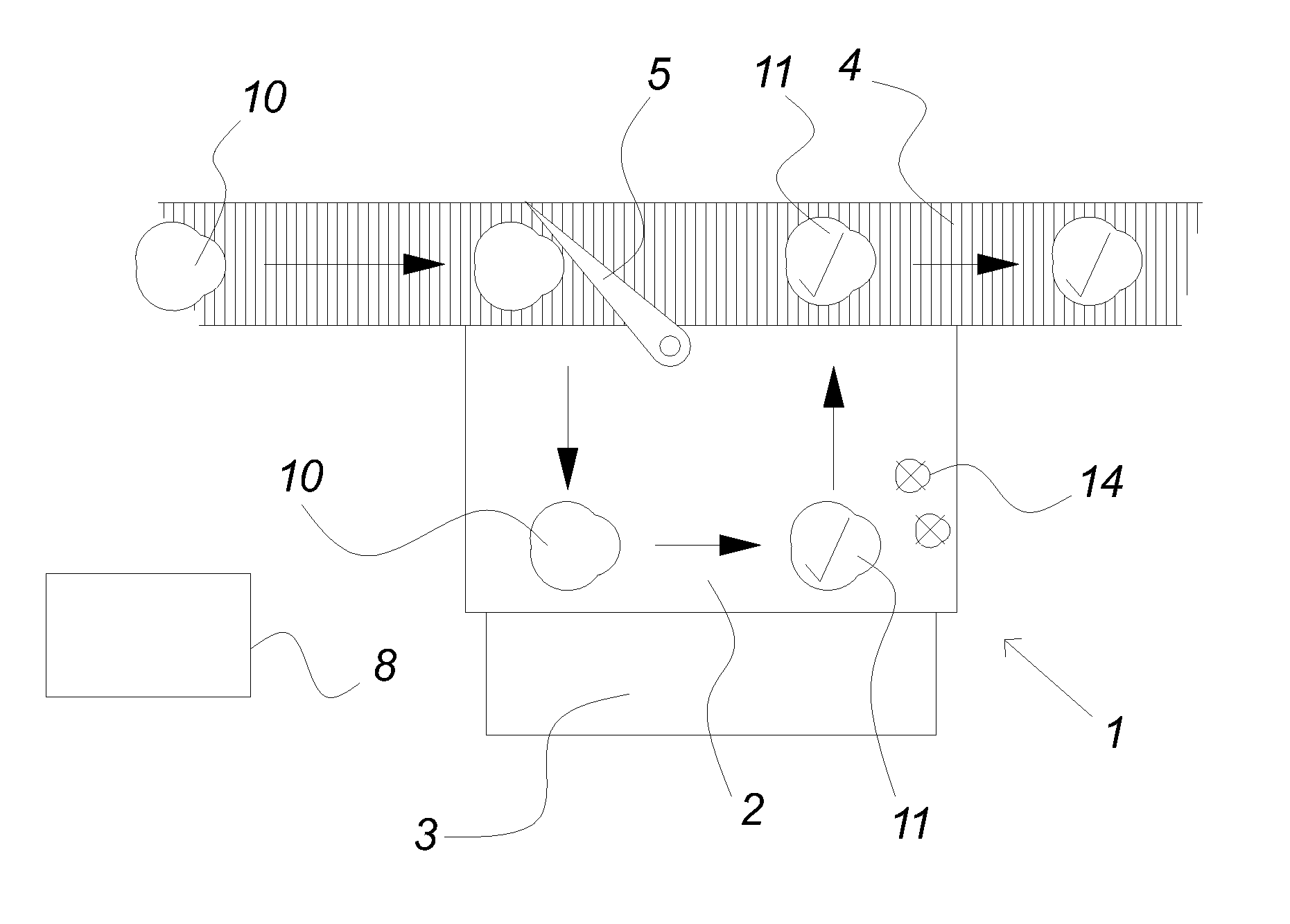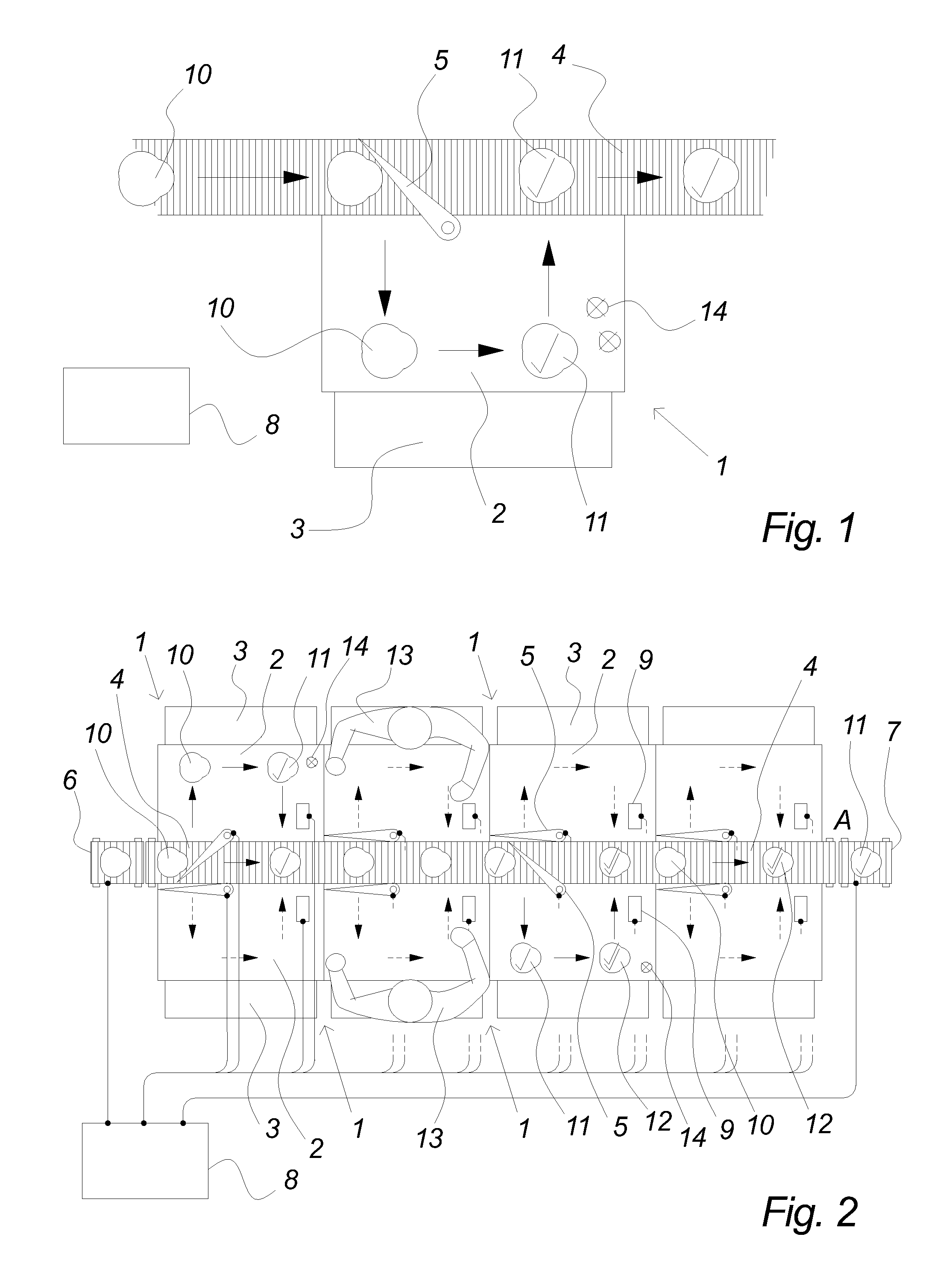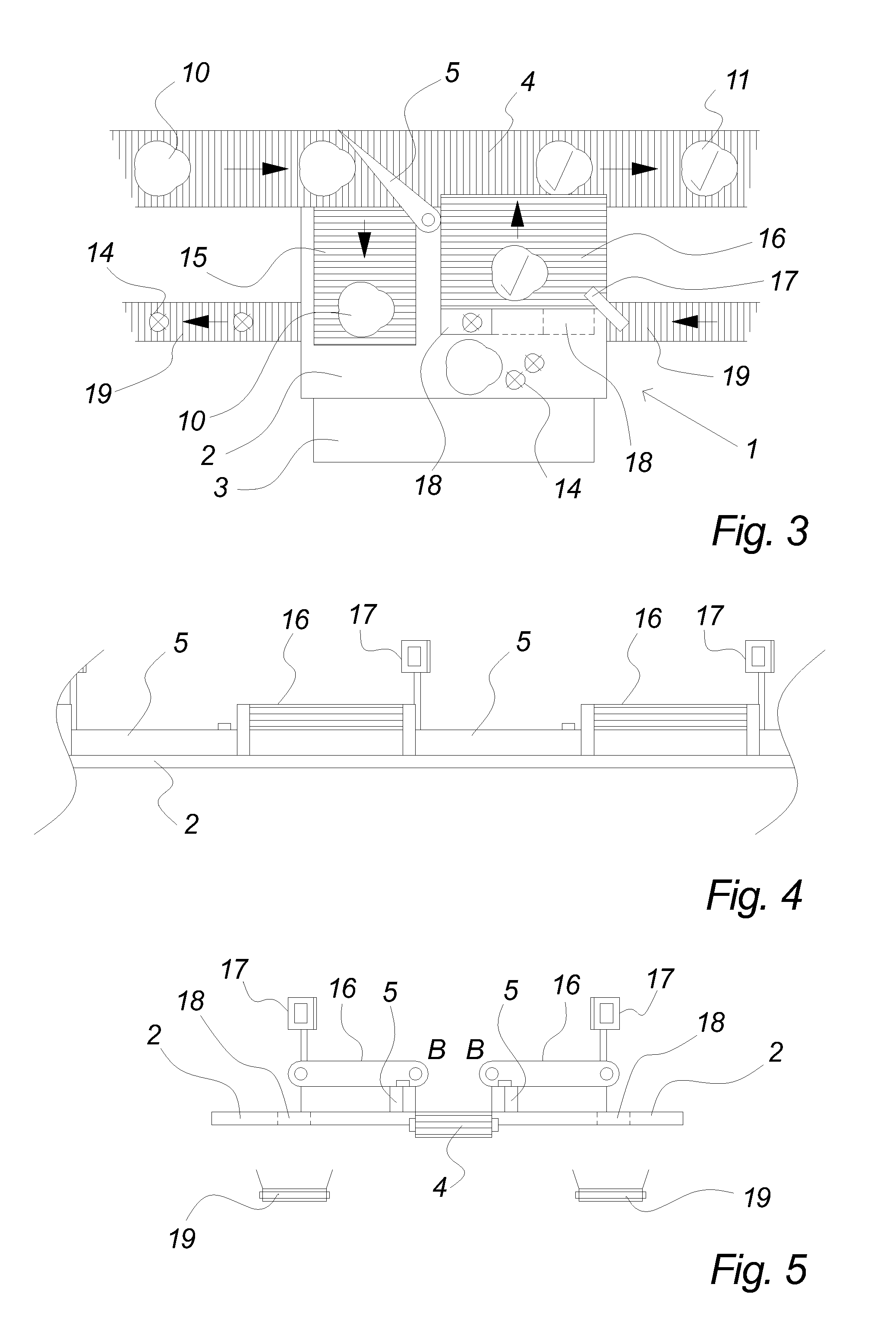Workstation of a food item processing system
a processing system and workstation technology, applied in the field of food item processing system, can solve the problems of difficult planning and design of the processing system, inflexible way, and inability to establish the second stage of processing at a separate location, and achieve the effect of enabling more processing stages and improving the flexibility of transportation means
- Summary
- Abstract
- Description
- Claims
- Application Information
AI Technical Summary
Benefits of technology
Problems solved by technology
Method used
Image
Examples
Embodiment Construction
[0060]FIG. 1 illustrates the principles in an embodiment of the present invention as seen from above. It comprises a workstation 1 preferably comprising a workstation table 2 and a platform 3 suitable for an operator to stand on when working at the workstation table 2. The configuration of the workstation table and platform may be designed according to the work to be carried out at the workstation.
[0061]The workstation of FIG. 1 forms part of a food processing system comprising several such workstations, e.g. a so-called trim table, flowline or cut-up table, and possibly also other processing, pre-processing and post-processing stations, e.g. registration stations, initial cut-up stations, sorting stations, quality control stations, packing stations, etc. The kind of specific items being processed in a system according to the present invention is not essential and can comprise any kind of items which have to be individually processed during production, e.g. slaughtered animals, e.g....
PUM
 Login to View More
Login to View More Abstract
Description
Claims
Application Information
 Login to View More
Login to View More - R&D
- Intellectual Property
- Life Sciences
- Materials
- Tech Scout
- Unparalleled Data Quality
- Higher Quality Content
- 60% Fewer Hallucinations
Browse by: Latest US Patents, China's latest patents, Technical Efficacy Thesaurus, Application Domain, Technology Topic, Popular Technical Reports.
© 2025 PatSnap. All rights reserved.Legal|Privacy policy|Modern Slavery Act Transparency Statement|Sitemap|About US| Contact US: help@patsnap.com



